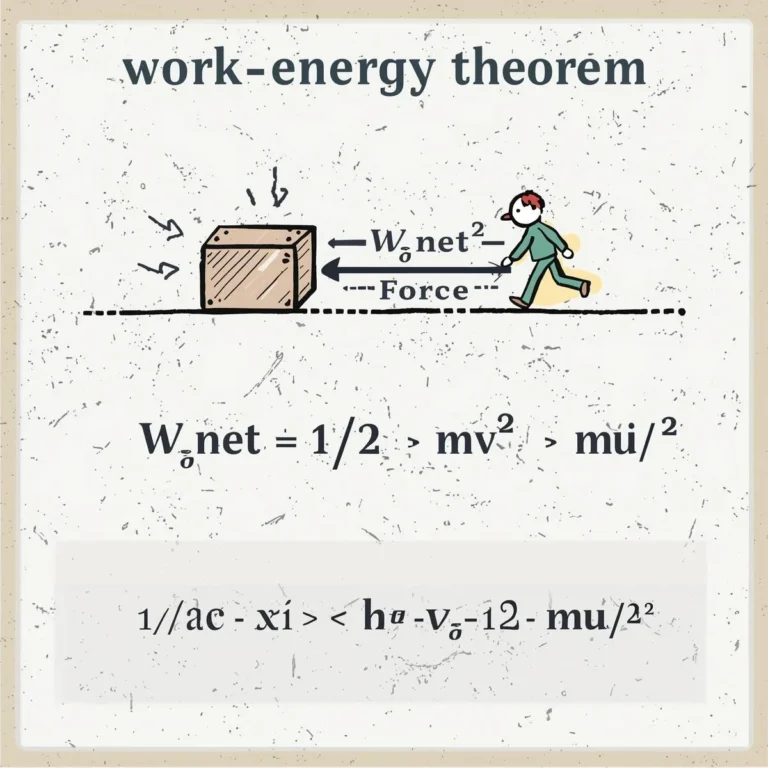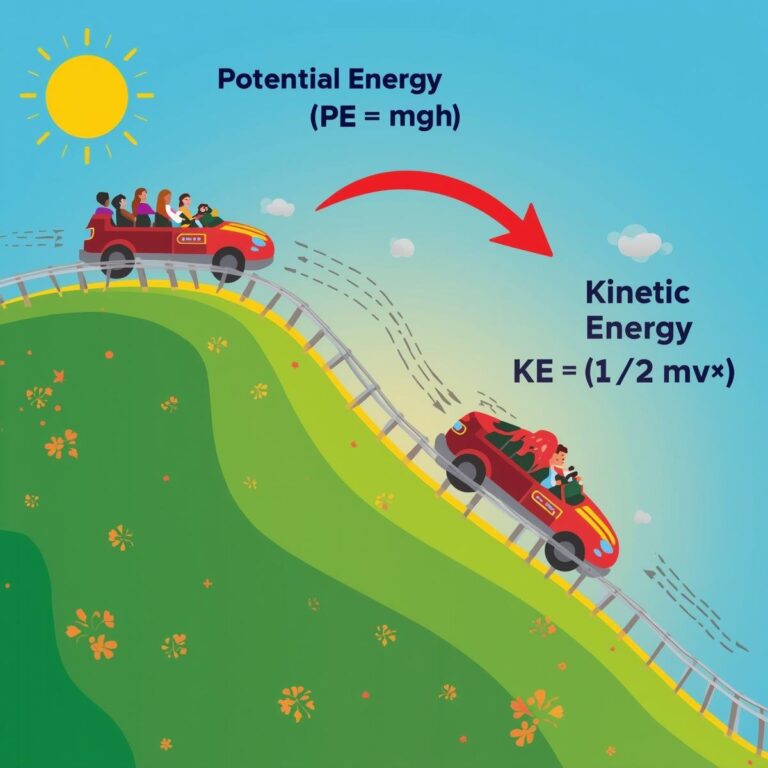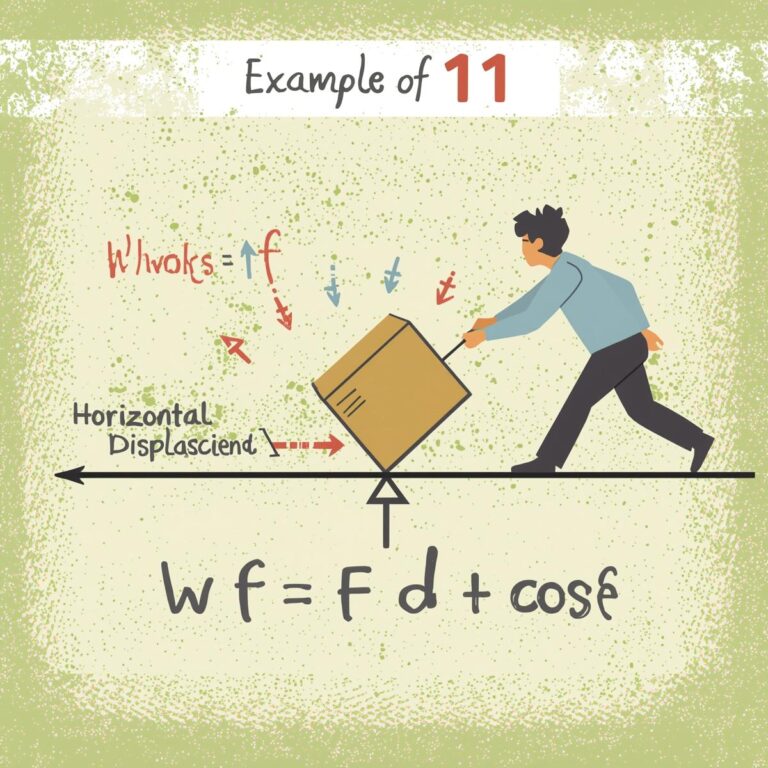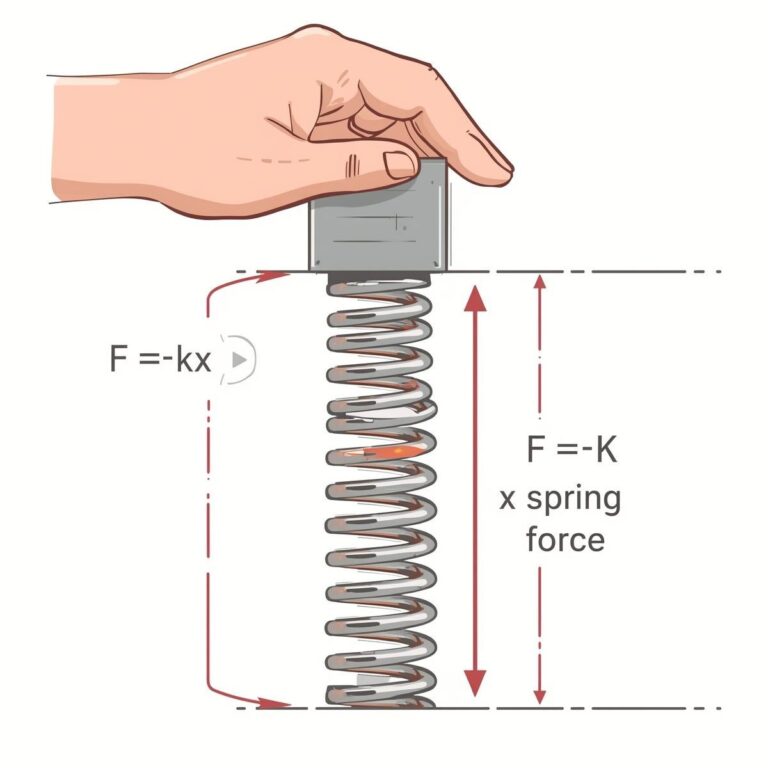Definition
Newton’s Second Law of Motion states that the rate of change of momentum of an object is directly proportional to the applied external force and takes place in the direction of the force. In simple terms, the acceleration of an object depends on the net force acting upon it and the mass of the object.
Formula
F = ma
Where:
- F = net force applied (in newtons, N)
- m = mass of the object (in kilograms, kg)
- a = acceleration produced (in meters per second squared, m/s²)
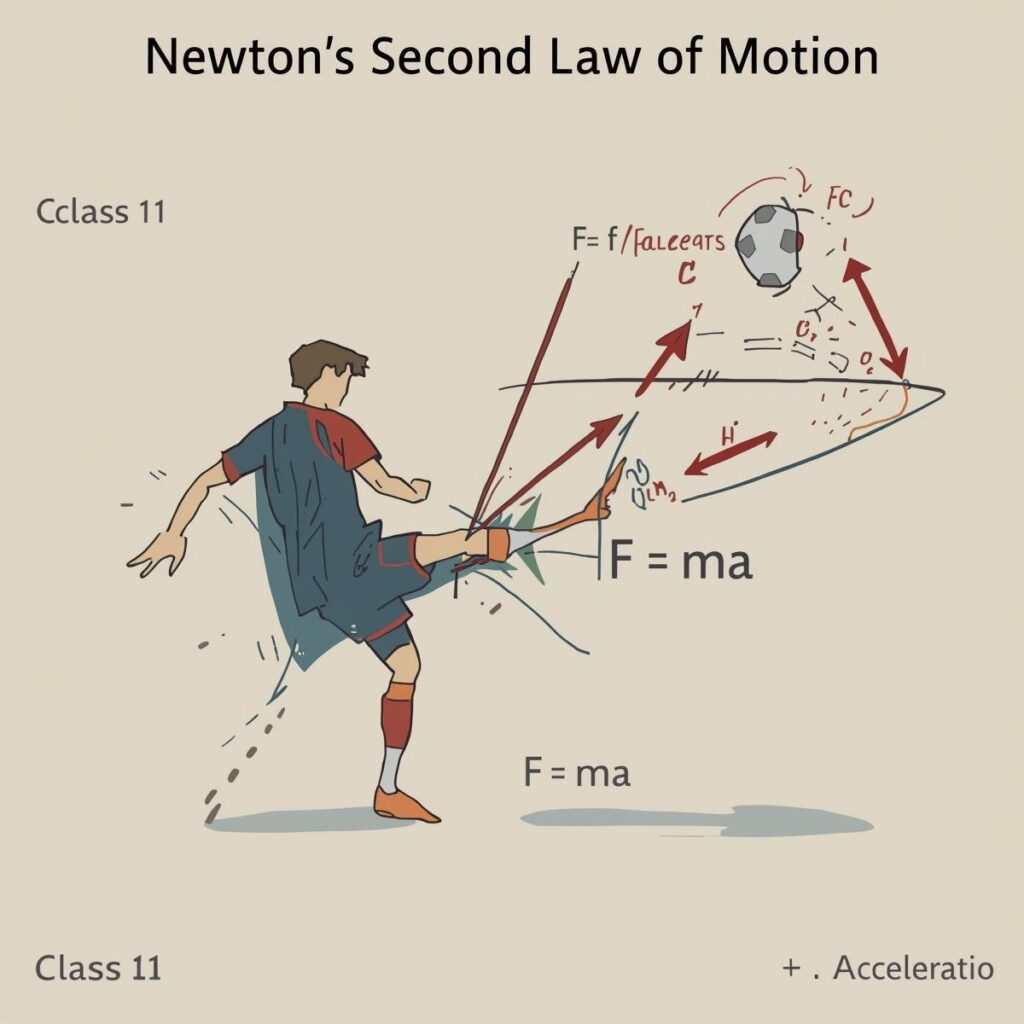
Derivation
Let an object of mass m move with initial velocity u.
After time t, a force F acts on it, changing its velocity to v.
- Initial momentum = mu
- Final momentum = mv
- Change in momentum = mv – mu = m(v – u)
- Rate of change of momentum = [m(v – u)] / t
According to Newton’s Second Law:
F ∝ [m(v – u)] / t
Or, F = k [m(v – u)] / t
Where k is a constant of proportionality. In SI units, k = 1.
So, F = m(v – u)/t
But, (v – u)/t = a (acceleration)
Therefore, F = ma
Example
A force of 10 N is applied to a mass of 2 kg.
Find the acceleration produced.
Given:
F = 10 N
m = 2 kg
Using F = ma:
a = F/m = 10/2 = 5 m/s²
Illustrative Image
Summary Table
| Aspect | Description |
|---|---|
| Law Name | Newton’s Second Law |
| Statement | The rate of change of momentum is proportional to the applied force and occurs in the direction of the force |
| Formula | F = ma |
| Example | A 2 kg object accelerates at 5 m/s² when a 10 N force is applied |
